Garden machetes are versatile tools that extend their usefulness far beyond traditional cutting and chopping tasks. Especially valuable for pruning, they serve as an efficient, all-in-one implement that can help maintain the health and aesthetics of your garden. When used properly, a machete streamlines the pruning process, enabling you to shape and control plant growth with ease.
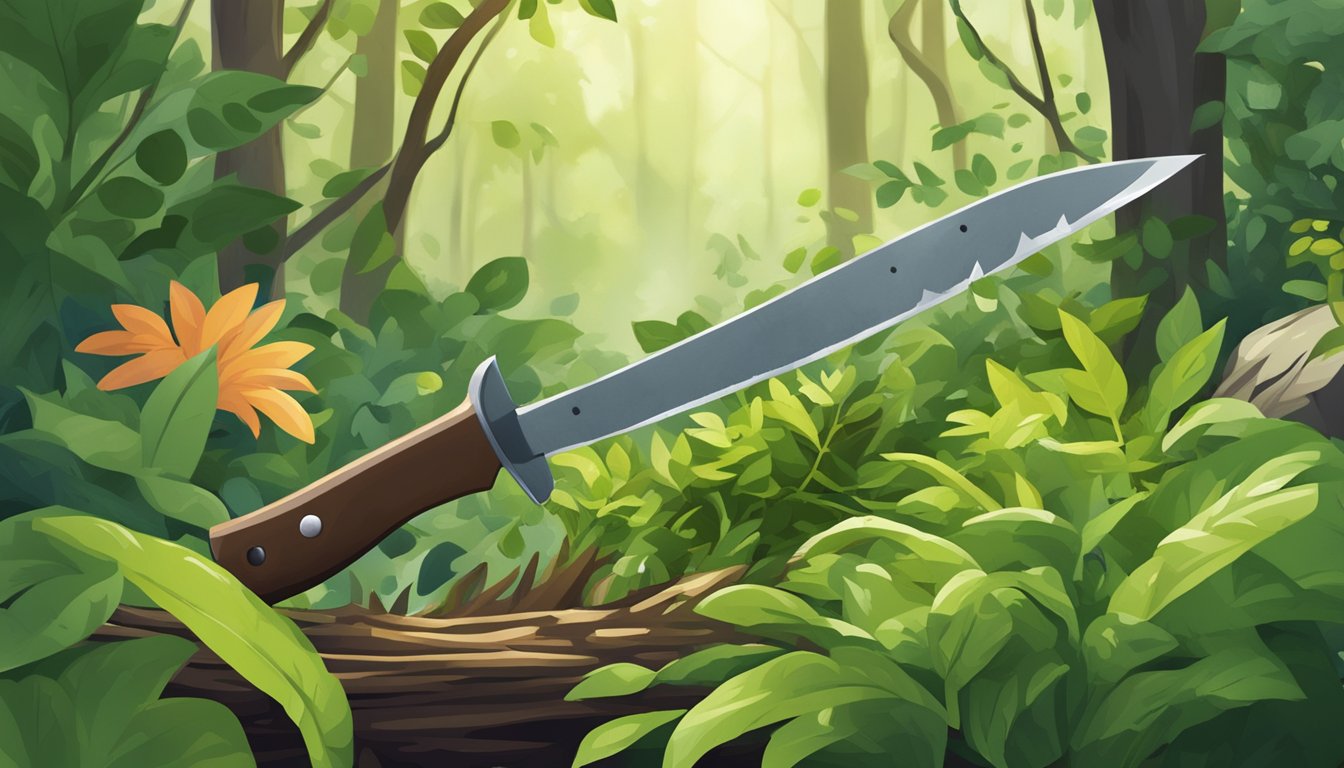
Selecting the right garden machete for pruning involves understanding key features such as blade design, weight, handle ergonomics, and overall balance. Each type of machete caters to different gardening needs, with some being better suited for heavy-duty cutting while others are refined for more precise work. Balancing these characteristics will enhance pruning techniques and ensure safety and longevity of the tool.
Key Takeaways
- A machete can streamline the pruning process in gardening.
- Choosing the right machete is critical for effective pruning and safety.
- Proper machete maintenance ensures longevity and performance.
Essential Features of Garden Machetes
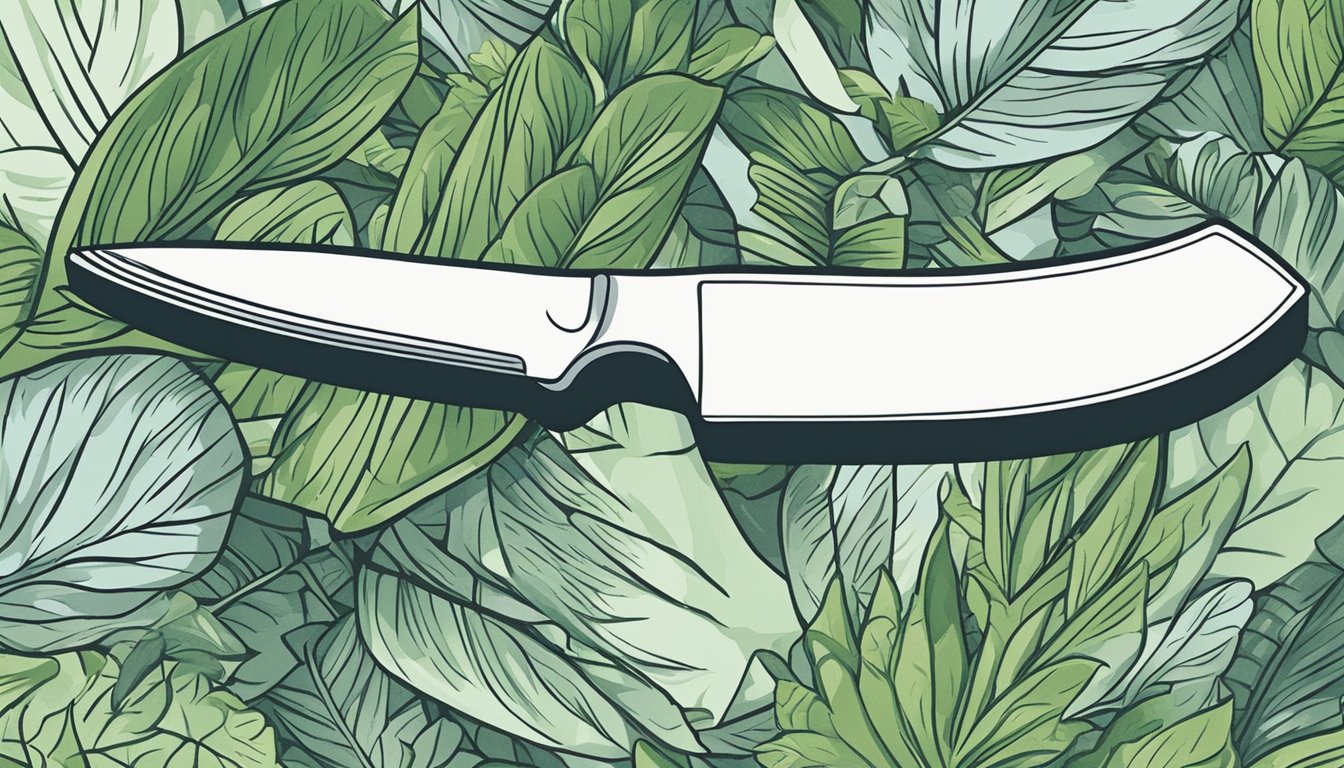
When selecting a garden machete for pruning, focus on blade material, blade length, and handle design. These elements determine the machete’s effectiveness, durability, and comfort.
Blade Material
The material of your machete’s blade plays a crucial role in its performance and longevity. Look for high-carbon steel blades, which are tough, maintain a sharp edge longer, and are ideal for cutting through thick vegetation. Stainless steel is another option, offering resistance to rust but typically requiring more frequent sharpening.
Blade Length
Your machete’s blade length is important for both control and power. Standard lengths range from 12 to 24 inches. A longer blade allows you to clear larger areas with each swing, but a shorter blade may provide more precision and is easier to wield in tight spaces. For pruning tasks, a blade length that balances control with reach is optimal.
Handle Design
The handle should ensure a secure and comfortable grip to reduce hand fatigue during extended use. Look for handles with ergonomic features such as a contoured shape or non-slip materials. Some machetes include a wrist lanyard that can prevent accidental slippage and offer additional safety.
Types of Garden Machetes

When selecting a machete for gardening and specifically for pruning, you should consider the variety of types available, each suited to particular tasks or preferences.
Best Machete for Pruning Trees
The best machete for pruning trees is one with a robust, weighted blade able to cut through branches with minimal effort. A well-balanced machete minimizes fatigue during extended use in tree pruning tasks.
Heavy-Duty Machetes
Heavy-Duty Machetes are characterized by their thick blades, designed for tough jobs. They can slice through dense underbrush or woody material, making them ideal when you require a more forceful approach in your garden.
Curved Machetes
Curved Machetes feature a blade that curves near the end, enhancing the cutting angle for slicing action. This design is particularly useful for reaching awkward angles when pruning plants and shrubs.
Serrated Machetes
Serrated Machetes have tooth-like edges, which make them excellent for sawing through material. They provide a different cutting dynamic that’s useful if you’re dealing with fibrous plants or need to saw as you prune.
Folding Pruning Machete
A folding pruning machete offers the convenience of portability and storage. Its blade folds back into the handle, making it safe to carry and handy for quick pruning tasks.
Lightweight Pruning Machete
Choose a lightweight pruning machete if you prefer ease of movement and precision. It reduces arm fatigue, allowing you to work for longer periods without strain, yet still offers sufficient cutting power for most pruning needs.
Machete for Orchard Pruning
A machete for orchard pruning should be sharp and precise, as it must make clean cuts to protect the health of fruit trees. Look for one that combines sharpness with a comfortable grip to ensure precise control.
Pruning Techniques with a Machete
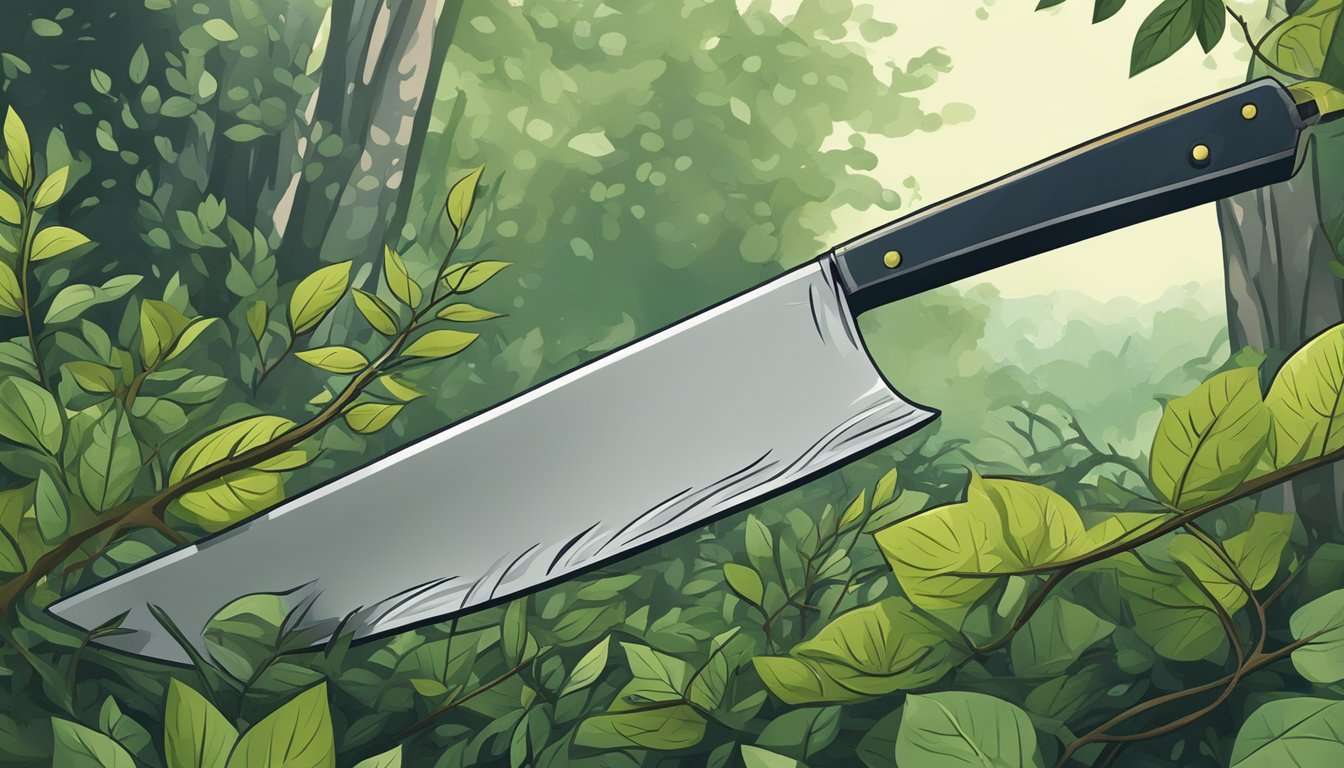
A garden machete is a versatile tool that you can use for various pruning techniques. When utilized correctly, it can swiftly chop, shape, and thin your garden’s vegetation.
Chopping
Chopping involves removing larger, thicker branches or overgrown vegetation. To chop effectively with your machete:
- Position the blade at a 45-degree angle to the branch.
- Swing with controlled force to cut through the branch in one motion.
This technique helps maintain your garden or landscape efficiently.
Shaping
Shaping is about crafting the overall structure and design of the plants. When shaping with a machete:
- Make angled cuts to direct new growth.
- Remove unwanted branches to define the plant’s shape.
Shaping is less about the size and more about the precision and direction of the cut.
Thinning
Thinning reduces density and promotes healthy growth. To thin using a machete:
- Identify and remove non-productive or overlapping branches.
- Cut away smaller, unwanted growths to increase air circulation and light penetration.
Thinning enhances plant health and can be efficiently performed with a sharp garden machete.
Pruning machete vs. pruning shears
The choice between a pruning machete and pruning shears depends on the task:
- Use a machete for large, less precise cuts or when dealing with thick brush.
- Opt for shears for smaller, more precise cuts on delicate plants.
Understanding when to use each tool is essential for effective garden maintenance. You can learn tips for using a machete, including safety, in the Fiskars guide.
Safety Precautions
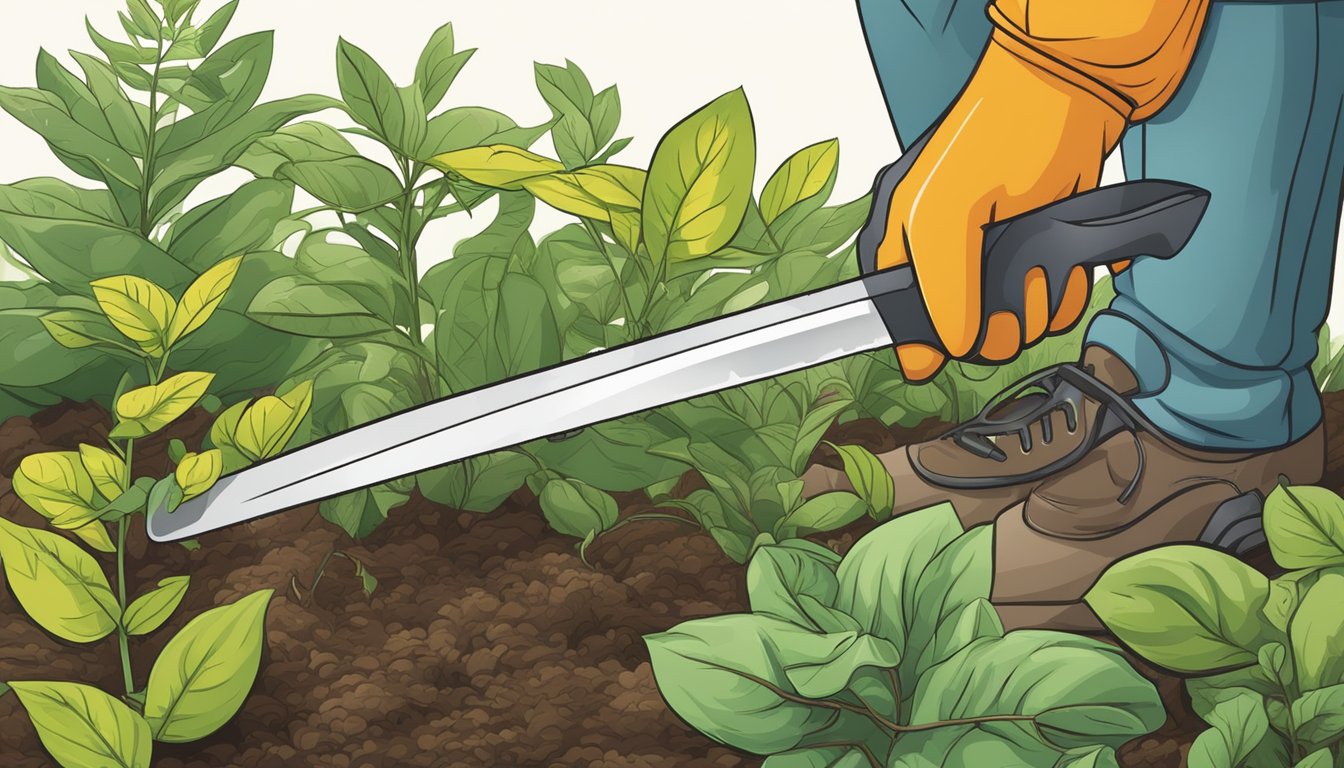
When using a garden machete for pruning, adhering to safety measures is paramount. A lax approach can lead to serious injuries.
Proper Handling
To ensure proper handling of a garden machete, grasp the handle firmly and maintain a balanced stance. Use smooth, controlled motions when cutting to prevent the machete from slipping. It’s essential to keep your body parts away from the swing path and the blade should always be swung away from your body.
Personal Protective Equipment
Wearing appropriate personal protective equipment (PPE) is crucial for your safety:
- Sturdy shoes to protect your feet from sharp debris
- Long pants and long-sleeved shirts to shield against scratches
- Work gloves to enhance grip and shield hands
- Safety goggles to protect eyes from flying particulates
- Ear protection if you will be working with power tools or for extended periods
Maintenance and Storage
Keep your machete in top condition with regular maintenance:
- Clean the blade after each use to prevent rusting
- Sharpen the blade regularly to keep cuts clean and reduce the required force
- Store the machete in a secure, dry place
- Always use a sheath when not in active use to protect the blade and ensure safety
By following these simple yet effective guidelines, you can safely employ a garden machete for your pruning tasks.
Machete Maintenance
Proper maintenance of your garden machete ensures its longevity and effectiveness in pruning tasks. Consistent care includes routine cleaning, sharpening, and rust prevention, which are critical for preserving your tool’s performance and safety.
Cleaning
After each use, wipe the blade with a damp cloth to remove dirt and plant residue. For stubborn sap or debris, use a mild detergent and a scrubbing brush, then thoroughly dry the blade to prevent rust.
- Materials Needed:
- Damp cloth
- Mild detergent
- Scrubbing brush
- Dry towel
Sharpening
The sharpness of your machete’s blade is vital for efficient cutting. Use a mill file or a sharpening stone, following the original angle of the edge, to maintain a keen blade.
- Sharpening Steps:
- Secure the machete.
- Glide the file or stone along the blade’s edge in one direction.
- Repeat until sharp, then switch sides.
Rust Prevention
To protect your machete from rust, apply a light coat of oil on the blade before storage. Choose a lubricant or oil designed for tools to create a barrier against moisture.
- Preventative Measures:
- Clean the blade before oiling.
- Apply a thin, even layer of oil.
- Store in a dry location.
Selecting the Right Machete

A garden machete can be an exceptionally versatile tool for pruning tasks. When choosing one, it’s crucial to consider the specific plants you’ll be working with and how the tool fits your personal handling comfort.
Plant Type Considerations
- Soft Vegetation: For thin brush and soft plants, a machete with a lighter, thinner blade can provide clean cuts without excessive effort.
- Woody Plants: If you’re tackling woody stems or branches, select a heavier machete with a thicker blade that can deliver the necessary chopping power.
User Comfort and Ergonomics
- Handle Grip: Ergonomically designed handles that accommodate your grip style can reduce fatigue and increase control.
- Tool Weight: A well-balanced machete, tailored to your strength, allows for longer work periods while minimizing strain on your muscles and joints.
By focusing on the plant type and matching the machete to your ergonomic needs, you’ll ensure efficient and comfortable pruning sessions.
Effective Pruning Practices
Utilizing a garden machete for pruning can enhance the health and appearance of your plants. A machete is a versatile tool that effectively trims and shapes a variety of greenery when used correctly.
Timing for Pruning
- Early Spring: Prune before buds break to allow plants to heal and grow robustly.
- Post-Blooming: For flowering plants, prune immediately after blooms fade to prepare for the next growth cycle.
Pruning Techniques
- Thinning Cuts: Remove entire branches at the point of origin to improve light and air flow.
- Heading Cuts: Shorten branches to stimulate growth of side branches for a fuller shape.
Remember to cut at a 45-degree angle to prevent water accumulation and promote healing.
Disposal of Green Waste
- Composting: Chop the green waste with your machete and add it to your compost pile.
- Council Collection: Some areas have green waste collection services; bundle your waste according to local guidelines.
For details on the versatility of a garden machete, read about why it’s the perfect tool for multiple garden tasks.
Advantages of Using a Machete
A machete can revolutionize your gardening approach, offering both practical and economical benefits. Understand how this tool streamlines your gardening tasks.
Efficiency
Your time is valuable, and a machete optimizes it. Whether you’re pruning fruit trees or clearing brush, its long blade makes quick work of what smaller tools struggle with. You can easily slice through thick vegetation and overgrown areas, transforming a full day’s labor into just a few hours. The efficiency is seen in its capability to replace multiple tools, from tree saws to pruners.
Versatility
One tool, multiple uses: a machete’s design ensures adaptability. Its applications range from soil preparation to harvesting crops. The curve of the blade allows for precision in cutting, making it suitable for detailed tasks too. You can learn about the different ways a machete can enhance your gardening techniques on websites like Machete Specialists, which shed light on its multifaceted nature.
Cost-Effectiveness
Invest in a machete and enjoy the savings. This one-time purchase saves you from buying several specialized tools. Over time, it proves to be a budget-friendly option in comparison to costly power tools. Not only do you save on the initial outlay, but also on maintenance and fuel costs. Its longevity and minimal upkeep are cited by sources like Woodman’s Pal as evidence of its enduring value.
Alternatives to Machetes
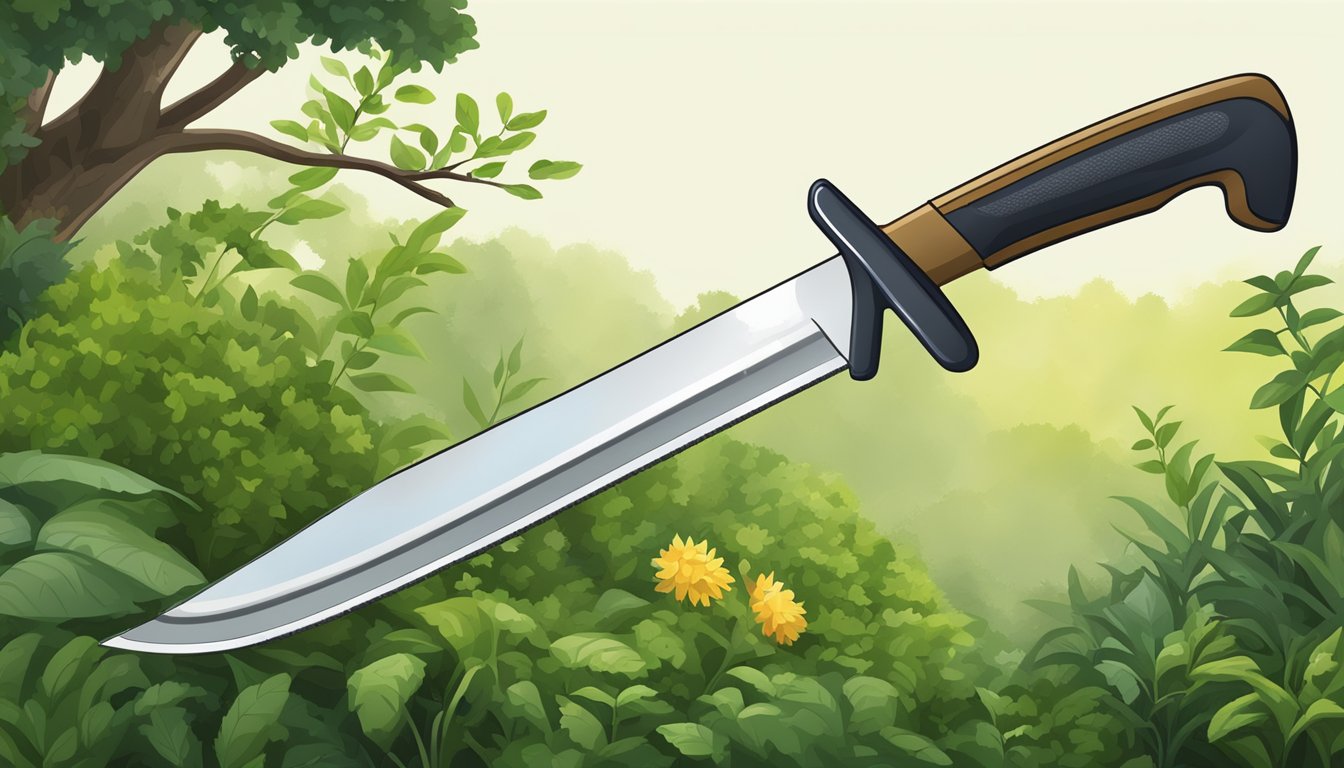
While machetes are versatile tools in the garden for pruning, you have other specialized equipment available for different pruning tasks. Each tool offers unique advantages when it comes to cutting precision, ease of use, and handling.
Pruning Saws
Pruning saws are ideal when you’re dealing with branches over an inch in diameter. They come with either straight or curved blades and often feature teeth designed for clean and quick cuts. A folding pruning saw can be a portable and efficient alternative to a machete, making it easier to handle thick branches.
Loppers
Loppers provide leverage for pruning branches typically up to two inches thick. They have long handles, which give you extra reach and help you exert more force with less effort. You can find loppers with ratchet systems that make cutting through tougher wood much simpler, a task that could be cumbersome with a machete.
Shears
For more delicate or precise cutting, such as shaping shrubs or trimming small, soft branches, shears are your go-to tool. They offer a more precise cut than a machete, with hand shears being perfect for quick snips and shaping green growth.
Legal and Environmental Considerations
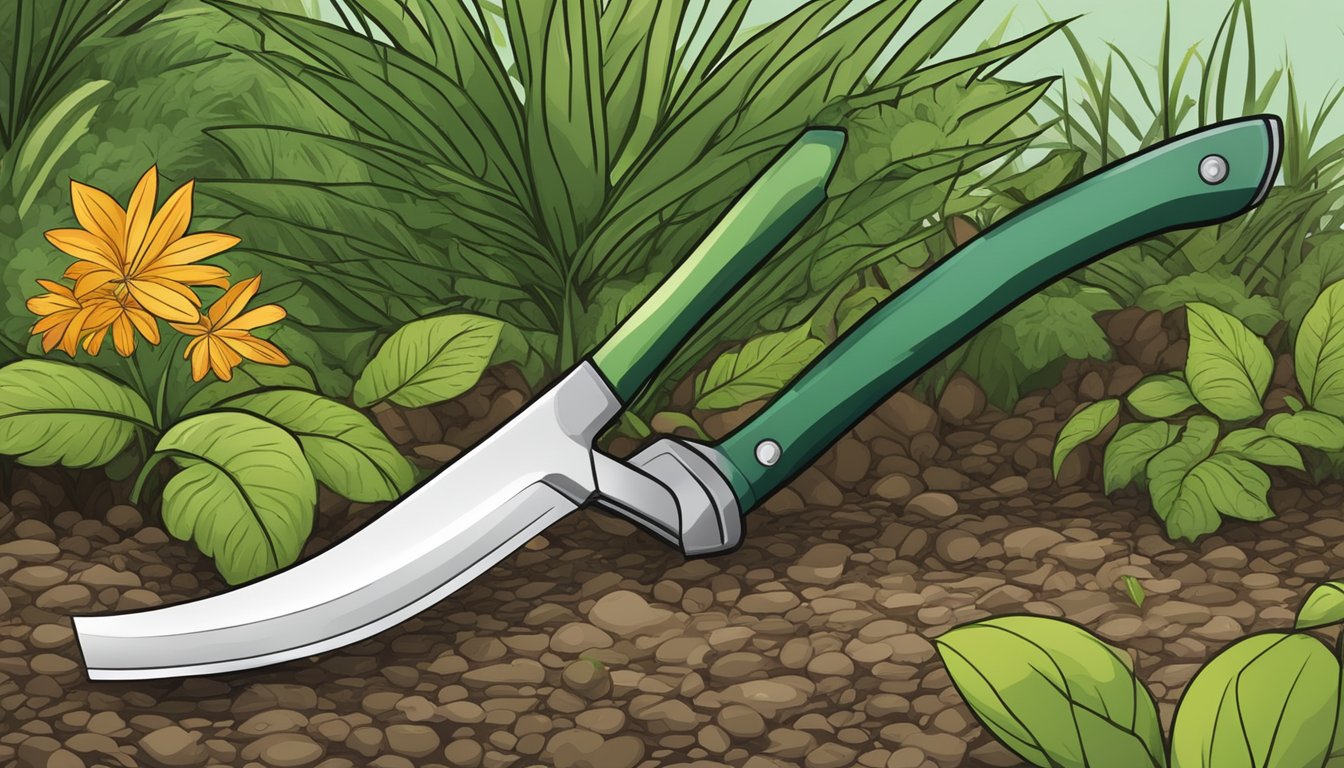
When selecting a garden machete for pruning, it’s imperative that you consider both the legal framework governing their use and the impact of these tools on the environment.
Regulations and Restrictions
Local Regulations: Always check your local laws before purchasing a garden machete, as they are subject to specific regulations in some regions. For instance, the exact classification of a machete can vary, influencing its legality. In certain places, a machete may be deemed a weapon rather than a garden tool, which could impose ownership restrictions.
Transportation and Purchase: When acquiring a machete, be aware of shipping regulations. Companies might use terms such as “edge tools” to facilitate smoother shipping and avoid delays at customs. The Harmonized Code for machetes is 8201.40.0000, and they are typically duty-free when imported into the US.
Sustainable Gardening Practices
Eco-Friendly Tool Choice: Machetes are an eco-friendly alternative to power tools. Their use reduces fossil fuel consumption and lowers noise pollution, contributing positively to a sustainable environment.
Maintenance and Upkeep: Proper maintenance of your machete ensures longevity and reduces waste. Regular sharpening, cleaning, and correct storage can extend the life of your tool, diminishing the need for frequent replacements and the ecological footprint associated with manufacturing new tools.
Innovations in Garden Machetes
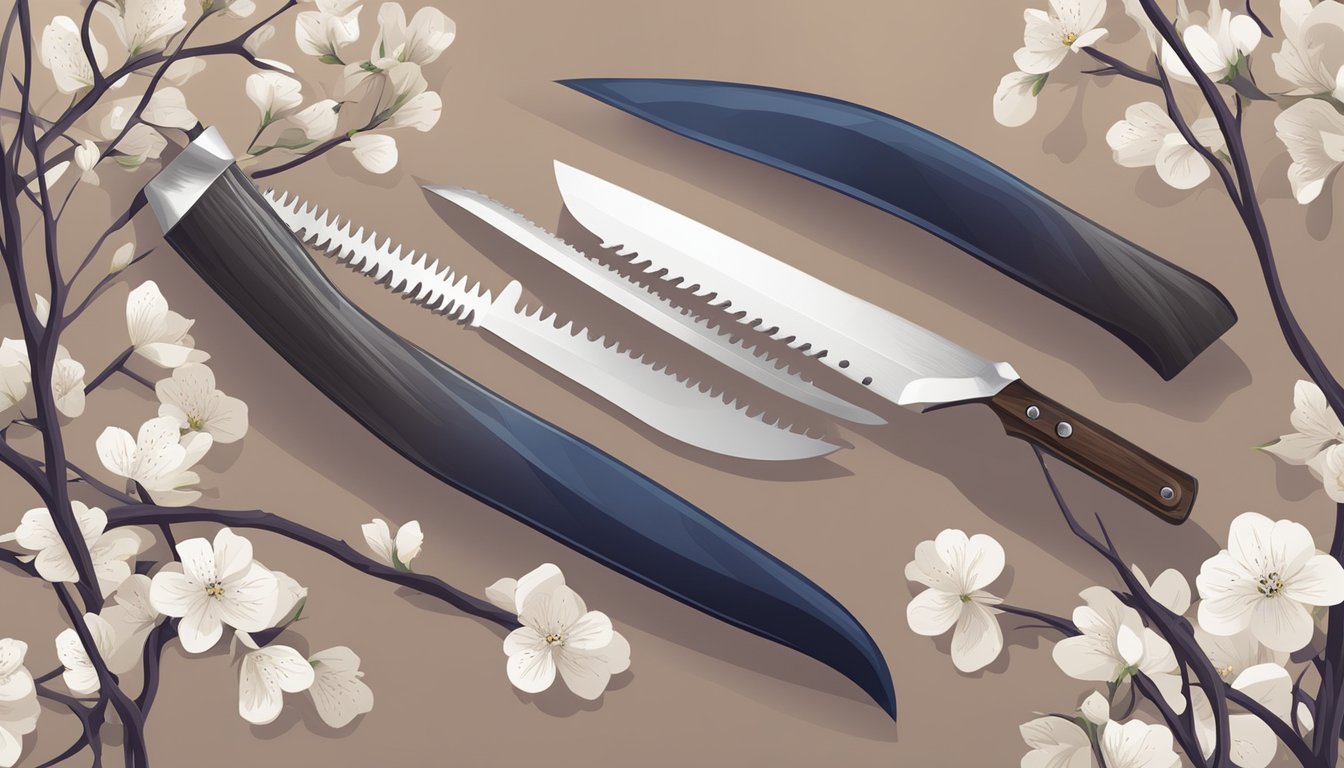
Garden machetes have evolved, offering you excellence in utility and sustainability through thoughtful design and material usage. These advancements improve your gardening efficiency and also promote environmental consciousness.
Multi-Tool Machetes
Your pruning tasks demand versatility, and multi-tool machetes are the response to that need. Manufacturers have integrated features such as saw teeth, gut hooks, and different blade edges into a single machete. This means you can switch from chopping to sawing without changing tools, streamlining your workflow and reducing the weight of your tool belt.
- Saw Teeth: For cutting thicker branches.
- Gut Hooks: Useful for stripping bark or opening bags of mulch.
- Blade Edges: Various edges for specific cutting tasks, be it sharp for clean cuts or serrated for sawing action.
Eco-Friendly Materials
The push towards sustainability has led to the development of garden machetes with eco-friendly materials. These tools are designed to minimize their environmental impact, using recycled metals and sustainable wood or composite materials for handles. Your choice of a garden machete can be aligned with environmental stewardship without compromising on quality or functionality.
- Recycled Metals: Reduces waste and the demand for new metal mining.
- Sustainable Handles: Crafted from responsibly sourced woods or composite materials that are durable and earth-friendly.
By choosing innovations in Multi-Tool Machetes or those made from Eco-Friendly Materials, you not only create an efficient garden but also contribute to a healthier planet.
Frequently Asked Questions
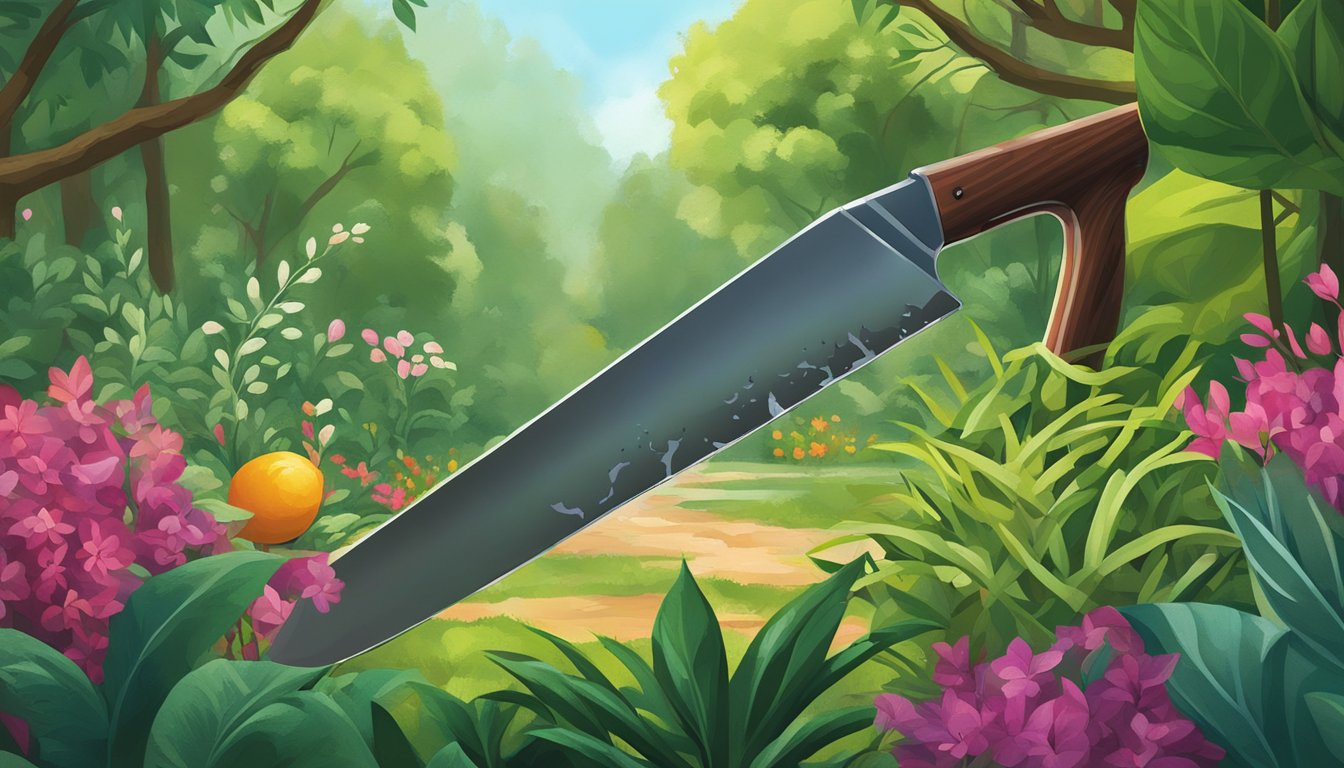
Selecting and using a garden machete for pruning can be a precise task. These questions aim to clarify the features, usage, and choices available to you.
What are the distinguishing features of a machete designed for garden pruning?
A machete for garden pruning typically features a thinner, sharper blade for precision cuts and may have a curved edge to facilitate slicing through branches. Ergonomically designed handles for a secure grip and blades made from high-carbon steel are common traits.
How do you safely use a machete for pruning tasks?
To safely use a machete, wear protective gear, such as gloves and eye protection. Maintain a stable stance, hold the machete securely, and cut away from your body using controlled motions. It’s important to keep the blade sharp for efficient cutting and minimize the risk of injury.
What materials and blade types are best suited for heavy-duty garden machetes?
Heavy-duty garden machetes should be made of durable materials like high-carbon steel or tempered steel for resilience and longevity. A full tang blade design ensures strength during tough pruning and brush-clearing tasks.
Which brands offer the most reliable garden machetes for yard work and brush clearing?
Brands like Condor Tool & Knife and Gerber Gear are recognized for their durable and effective garden machetes suitable for yard maintenance and brush clearing.
How does a vintage Corona machete compare to modern machetes for garden work?
Vintage Corona machetes are known for their craftsmanship and durability; however, modern machetes often incorporate advanced materials and ergonomic designs to enhance comfort and efficiency during garden work.
Can a garden machete be an effective tool for both pruning and brush clearing, and what are the considerations?
Yes, a garden machete can be effective for both pruning and brush clearing, provided it has the right blade shape and edge for detailed cutting tasks while also being robust enough for clearing thick brush. Consider the size and weight that will allow maneuverability for pruning without sacrificing the power needed for brush clearing.
- Best Brush Cutter: Top 5 Models for Lawn Maintenance in 2024 - January 10, 2024
- 5 Best Chainsaw Pants: Essential Safety and Comfort Guide - October 27, 2023
- 5 Best Chainsaw Knee Pads: Essential Safety Gear for Woodcutting - October 24, 2023